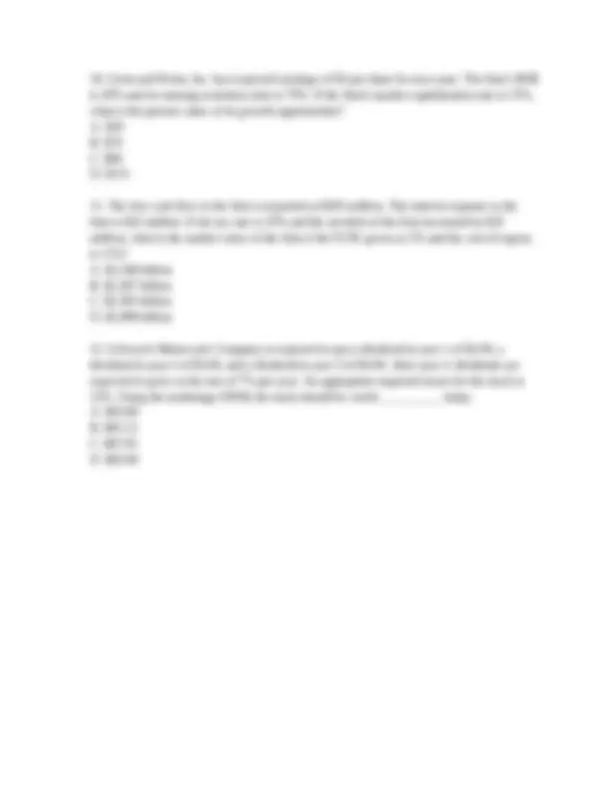



Study with the several resources on Docsity

Earn points by helping other students or get them with a premium plan


Prepare for your exams
Study with the several resources on Docsity

Earn points to download
Earn points by helping other students or get them with a premium plan
Community
Ask the community for help and clear up your study doubts
Discover the best universities in your country according to Docsity users
Free resources
Download our free guides on studying techniques, anxiety management strategies, and thesis advice from Docsity tutors
A set of 12 multiple-choice questions related to bond pricing, accrued interest, yield to call, forward rates, and the dividend discount model. Topics covered include calculating accrued interest, determining yield to call, finding implied forward rates, and applying the dividend discount model to value stocks.
Typology: Study notes
1 / 3

This page cannot be seen from the preview
Don't miss anything!

